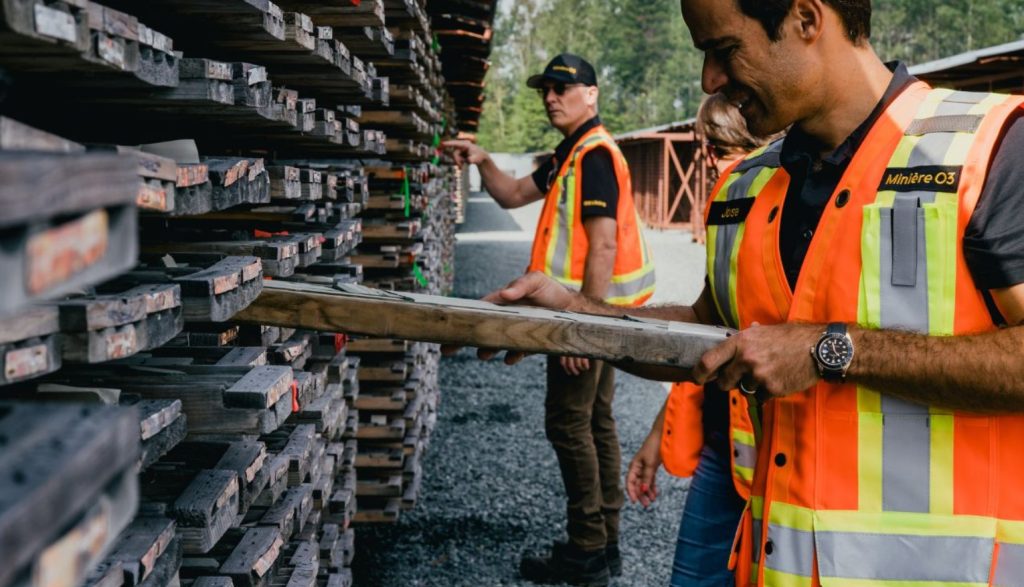O3 Mining drills 0.24% copper over 1.4 metres at Horizon, Quebec

O3 Mining Inc. [TSXV-OIII; OTCQX-OIIIF] reported results of the two inaugural drill holes completed over the prospective volcanogenic massive sulphide (VMS) belt within the Horizon project, in Val d’Or, Quebec, Canada.
Highlights: Hole O3HR-23-001 intercepted a laminated sulphide-rich siliceous tuff containing highly anomalous base and precious metal values of up to 0.24% copper, 0.15% zinc, 0.1 g/t gold and 1.4 g/t silver over 1.4 metres from 356 metres.
These anomalous values are well within the range of values encountered in VMS-related exhalative horizons in other prolific belts of Abitibi like the C contact at Noranda and the Key tuffite at Matagami.
The exhalative horizon in O3HR-23-001 is located along a 2.5-kilometre-long chargeability induced polarization (IP) and magnetic anomaly contained within a bimodal (mafic-felsic) volcanic sequence reaching 14 kilometres in length and interpreted to be equivalent to the Louvicourt group, which hosts the Louvicourt VMS deposit in the Val d’Or district (14 million tonnes at 3.5% Cu, 1.5% Zn, 25.9 g/t Ag and 0.9 g/t Au).
Eight other IP anomalies have been obtained within the 14 km long volcanic sequence, all of which remain to be tested.
O3 Mining’s president and CEO, Jose Vizquerra, commented: “We are very excited about the initial results at the Horizon project that confirm the discovery of a fertile environment supporting a highly prospective VMS deposit. VMS deposits represent some of the richest sources globally of a diverse group of strategic metals including copper, zinc, and lead. VMS deposits can also produce significant amounts of gold and silver as byproducts. The sizeable prospective belt within the Horizon Project and the multiple geophysical anomalies identified by O3 Mining have provided the fundamental elements that allow for the discovery of VMS deposits. These meaningful results create a new focus of interest on the project that warrants subsequent drilling.”
The next steps at the Horizon Project will consist of fence drilling to identify the prospective horizons in terms of VMS deposition or emplacement. Each prospective horizon will be characterized by its IP and soil response. The best targets will be drill tested at a 400-metre spacing at a vertical depth of 300 metres and pulse EM surveys will be completed in each hole to be able to rapidly cover the horizons and discover significant VMS mineralization.
The Horizon Project is located directly to the northwest of Marban Alliance. It consists of 192 claims covering 8,778 hectares, contiguous with Marban Alliance. The exploration stage at Horizon is less advanced than Marban Alliance, even though it covers the traces of the prolific Marbenite and Norbenite shears. The southwestern portion of the Horizon Project also covers the eastern end of the Blake River Group and a portion of the Temiskaming Group, where the auriferous Parfouru fault has been recognized. Also, the northern portion covers the Louvicourt Group described in the current press release.
